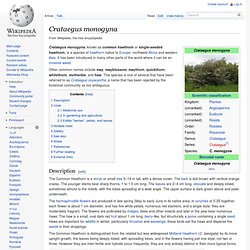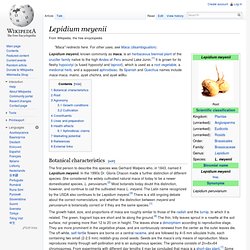

Foods to increase testosterone. Asparagus Asparagus are rich in vitamin E, which stimulates the production of testosterone.

Other benefits found from Vitamin E consumption are the protection against prostate cancer and Alzheimer's disease Another benefit of consuming foods rich in Vitamin E, is that it reduces the risk of developing bladder cancer which kills 12,500 Americans annually, being the fourth leading cancer killer among men, and four times more common in men than women. (source: the annual meeting of the American Association of Cancer Research, Orlando, FL, May 23, 2004.) Figs Figs are high in amino acids, which researchers believe can increase libido and your sexual stamina. The fiber found in fruits such as figs are said to significantly lower the risk of breast cancer in postmenopausal women. Include figs in your diet to help meet your body's daily requirements for minerals. cup serving of dried figs contains:
Andropause. Crataegus monogyna. Crataegus monogyna, known as common hawthorn or single-seeded hawthorn, is a species of hawthorn native to Europe, northwest Africa and western Asia.

It has been introduced in many other parts of the world where it can be an invasive weed. Other common names include may, mayblossom, maythorn, quickthorn, whitethorn, motherdie, and haw. This species is one of several that have been referred to as Crataegus oxyacantha, a name that has been rejected by the botanical community as too ambiguous. Description[edit] The Common Hawthorn is a shrub or small tree 5–14 m tall, with a dense crown. The Common Hawthorn is distinguished from the related but less widespread Midland Hawthorn (C. laevigata) by its more upright growth, the leaves being deeply lobed, with spreading lobes, and in the flowers having just one style, not two or three.
Ginkgo biloba. Ginkgo (Ginkgo biloba; in Chinese, Korea and Japanese: 銀杏, pinyin romanization: yín xìng, Hepburn romanization: ichō or ginnan, Vietnamese: bạch quả), also spelled gingko[3] and also known as the maidenhair tree, is a unique species of tree with no living relatives.

The ginkgo is a living fossil, recognisably similar to fossils dating back 270 million years. Native to China,[4] the tree is widely cultivated and was introduced early to human history. It has various uses in traditional medicine and as a source of food. Ginkgo biloba cross section of tree trunk (source: MHNT) Description[edit] Ginkgo is a relatively shade-intolerant species that (at least in cultivation) grows best in environments that are well-watered and well-drained. Branches[edit] Leaves[edit] Ginkgo leaves in summer Leaves of long shoots are usually notched or lobed, but only from the outer surface, between the veins.
Maca Root - Side Effects and Benefits. Botanical Name Lepidium meyenii.

Other Common Names. Lepidium meyenii. Lepidium meyenii, known commonly as maca, is an herbaceous biennial plant of the crucifer family native to the high Andes of Peru around Lake Junin.[1] It is grown for its fleshy hypocotyl (a fused hypocotyl and taproot), which is used as a root vegetable, a medicinal herb, and a supposed aphrodisiac.

Its Spanish and Quechua names include maca-maca, maino, ayak chichira, and ayak willku. Botanical characteristics[edit] The first person to describe this species was Gerhard Walpers who, in 1843, named it Lepidium meyenii. In the 1990s Dr. Gloria Chacon made a further distinction of different species. The growth habit, size, and proportions of maca are roughly similar to those of the radish and the turnip, to which it is related. Root[edit] Maca root powder Maca is the only member of its genus with a fleshy hypocotyl, which is fused with the taproot to form a rough inverted-pear-shaped body.
Saw palmetto extract. Saw palmetto extract is an extract of the fruit of Serenoa repens.

It is rich in fatty acids and phytosterols. It has been used in traditional, eclectic, and alternative medicine to treat a variety of conditions, most notably benign prostatic hyperplasia (BPH). Review of clinical trials, including those conducted by the National Center for Complementary and Alternative Medicine, found the extract to be no more effective than placebo for BPH.[1] Medicinal use[edit] Saw palmetto is used in several forms of traditional herbal medicine. Crude saw palmetto extract was used by European/American medical practitioners for at least 200 years for various conditions, including asthenia (weakness), recovery from major illness, and urogenital problems.
King's American Dispensatory (1898) says of the extract: It is also an expectorant, and controls irritation of mucous tissues. Saw palmetto extract has been suggested as a potential treatment for male pattern baldness.[21] See also[edit] References[edit]